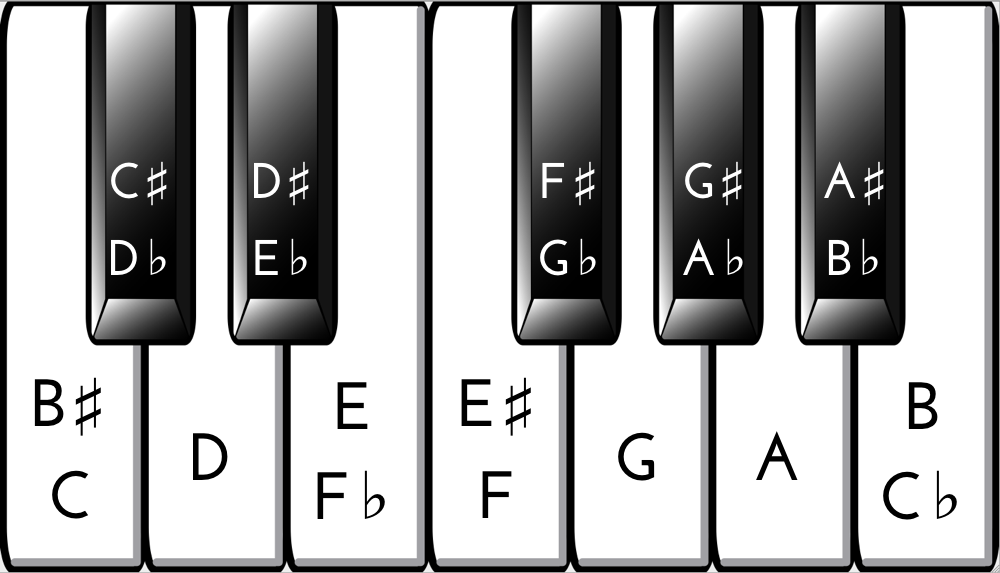If you’re just learning to find notes on the piano keyboard, this basic piano key chart is designed for you. The chart includes naturals (C, D, E, F, G, A, B), flats and sharps. (Double sharps and double flats have been omitted, since the chart would otherwise get too confusing and do more harm than good.) If you’re just getting started, you might wish to start with the Piano Notes Chart… but be sure to return here!

If you only learn one thing about the piano key chart, make sure it’s this: The keys are not the notes (see Layout of Piano Keys). You’ll notice that each key has two different note names in the chart. In fact, technically speaking there’s no limit to the number of notes that correspond to a given key on a piano. Hence, the first key in the chart could be C or B-sharp, or it could be D double flat or even A triple sharp!
The piano would be impossible to play if it had separate keys for all the flats, sharps, double flats and double sharps. Therefore, each possible note in Western music corresponds to one key on a piano, and in fact many different notes correspond to the same key. These notes (called enharmonic) are “close enough” in pitch that most people couldn’t detect any real difference anyway, so only a single piano key is used for all of them.
This doesn’t mean that they’re all created equal. The reason that all these different notes exist which are played by only one key on a piano is that it depends on how a composer uses them. Thus, F-sharp and G-flat might sound the same (on a piano at least), but they can have very different functions in actual music. For a very convincing demonstration, listen to the examples in the article Piano Theory.
If you’re just learning the piano keyboard, first learn the middle row of white keys (C, D, E…). These are the naturals, and they’ll serve to orient you.
Now, a sharp (which looks like a pound sign: #) means to play the next higher key. That next key can be either black or white. A flat (which looks like a lowercase ‘B’: b) means to play the next lower key.
Many beginners are confused by this point, as they think that a sharp or flat means a black key. Sharps and flats are not the black keys. All black keys are either a sharp or flat, but not all sharps and flats are black keys. Remember, an accidental (a sharp or flat) merely means to play the next higher or lower key on a piano, and that next key may be black or white.
Putting these facts together, you can now easily find any key on the piano! The piano key chart above will help guide you in case you get stuck.
Start Your NEW Piano Journey
Sign up below and each week for the next year, I'll send you a conservatory-quality 3- to 5-minute lesson sharing exclusive playing and practice techniques used by concert artists worldwide.
Each lesson has been carefully crafted to meet the needs of players ranging from beginners to the late intermediate level.
As a very special bonus, you'll also receive invitations to join our exclusive live Keys to Mastery™ monthly masterclasses.
We will never sell your information, for any reason.

